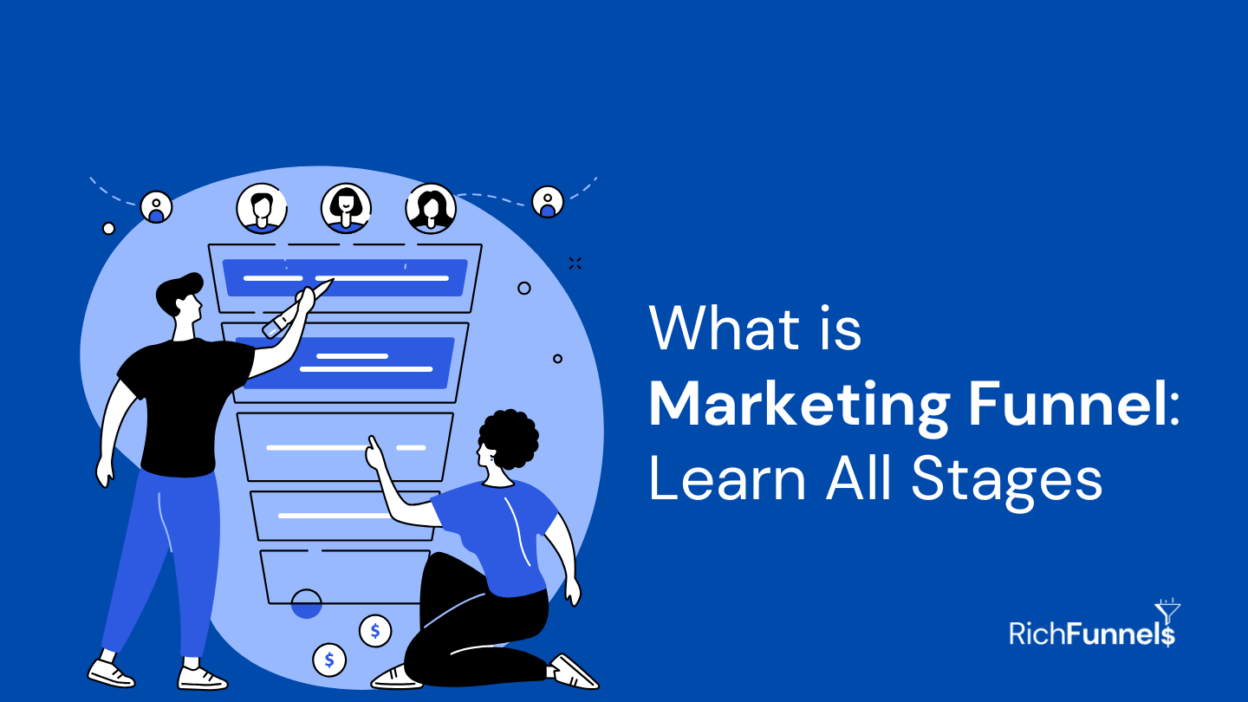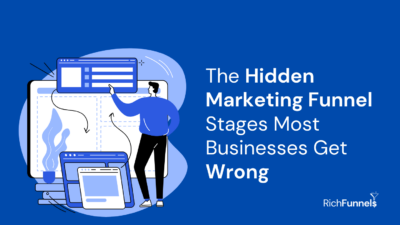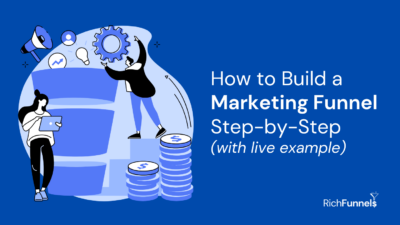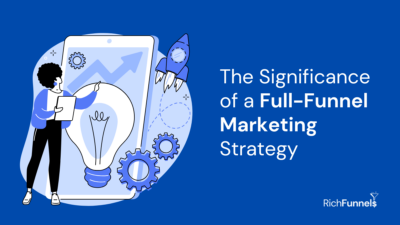I want to start this article with one question: Why do you need to understand the marketing funnel? Because without knowing your customer journey, you can’t sell anything.
Every business owner faces the challenge of turning casual browsers into loyal customers, but understanding the marketing funnel stages has become increasingly complex now a days.
In fact, the traditional Marketing Funnel has evolved significantly with the rise of digital channels and changing consumer behaviors. What was once a linear path now represents a sophisticated journey that requires careful planning and strategic implementation at each stage.
This comprehensive guide breaks down the essential components of modern marketing funnels, specifically focusing on how businesses can optimize each stage for better results. You’ll learn about effective customer engagement strategies, technology integration, and measuring success across different funnel stages.
Understanding the Modern Marketing Funnel
The marketing landscape has undergone a remarkable transformation since its traditional beginnings in 1898. Today’s digital era demands a more sophisticated approach to customer engagement and conversion.
Evolution from Traditional to Digital Funnels
The traditional marketing funnel followed a straightforward path: awareness, interest, and desire. Moreover, geographic limitations meant customers typically compared products within a single store. Nevertheless, the internet’s arrival changed everything, creating savvier customers who demanded more from their preferred brands.
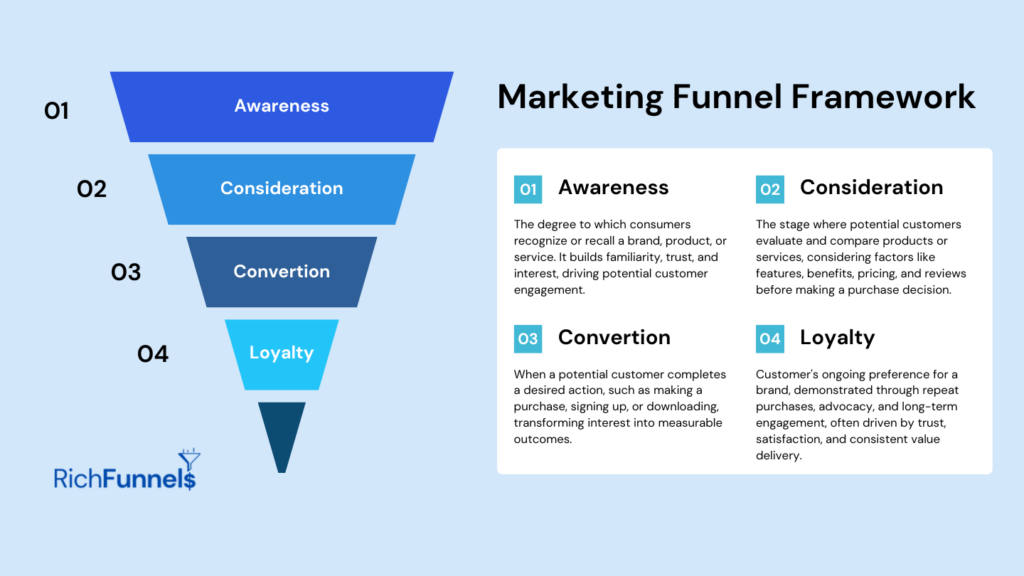
Key Components of Today’s Marketing Funnel
The modern marketing funnel has evolved into an omni-channel experience unique to each customer. Research shows that 77% of B2B purchasers conduct independent research before speaking with any sales representative.
Today’s marketing funnel includes these essential components:
- Awareness and engagement (Top of Funnel)
- Consideration and remarketing (Middle of Funnel)
- Conversion and retention (Bottom of Funnel)
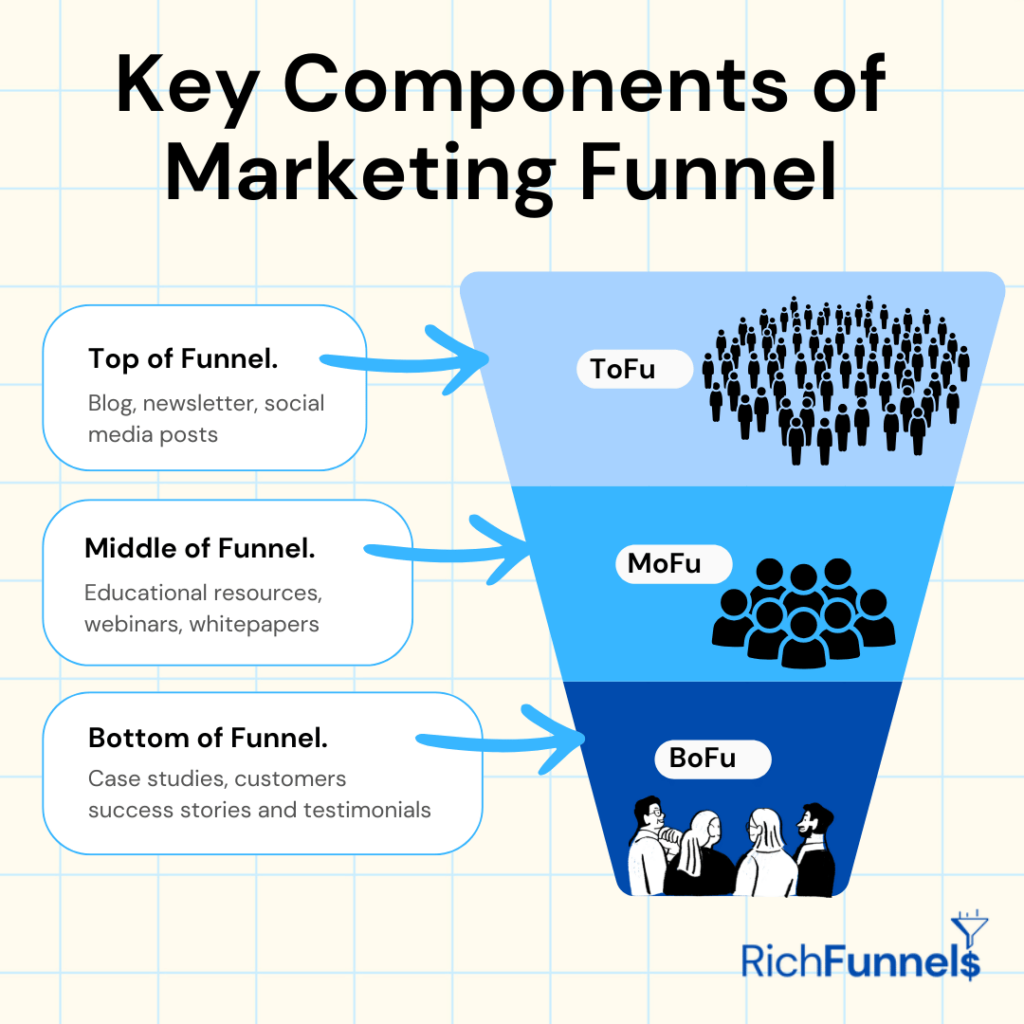
How Digital Transformation Has Reshaped the Funnel
Digital transformation has fundamentally altered how customers interact with brands. Additionally, the traditional linear journey has transformed into what many experts call a “looping hourglass”. This new structure allows prospects to enter and exit at any stage, creating a more dynamic customer journey.
The digital age has introduced several notable changes:
- Personalized Engagement: Customers now expect brands to understand their individual needs rather than receiving mass-marketing messages.
- Data-Driven Decisions: Technology and analytics provide marketers with deeper insights into customer behavior.
- Extended Customer Journey: The funnel now includes post-purchase stages like adoption, loyalty, and advocacy.
Furthermore, this transformation has shifted the balance between marketing and sales departments. Marketing teams now guide prospects through most of the journey, while sales teams focus primarily on the final conversion stages.
Consequently, brands must adapt their strategies to meet these evolving demands. The modern funnel emphasizes building authentic relationships and delivering value at every touchpoint, rather than simply moving customers through predetermined stages.
Mapping Customer Touchpoints Across Funnel Stages
Successful customer journey mapping requires understanding how prospects interact with your brand across various digital touchpoints. Indeed, research shows that 69% of consumers stop doing business with brands after a poor experience, making it crucial to optimize each stage of the marketing funnel.
Top of Funnel Marketing Engagement Strategies
At the awareness stage, businesses must focus on reaching potential customers through multiple channels. Studies indicate that 25% of social media users aged 18-44 have made purchases through social media apps in the past three months. Accordingly, successful top-funnel strategies include:
- Customer reviews and testimonials
- Social media engagement
- Online advertising
- Product demonstrations
- Educational content like blog posts and infographics
Middle Funnel Nurturing Tactics
During the consideration phase, 44% of CMOs agree that email marketing is essential to their strategy. Therefore, middle-funnel nurturing requires a balanced approach to keep prospects engaged:
| Tactic | Purpose |
|---|---|
| Targeted Email Campaigns | Personalized content delivery |
| Product Comparisons | Help decision-making process |
| Case Studies | Demonstrate real-world value |
| Webinars | In-depth product education |
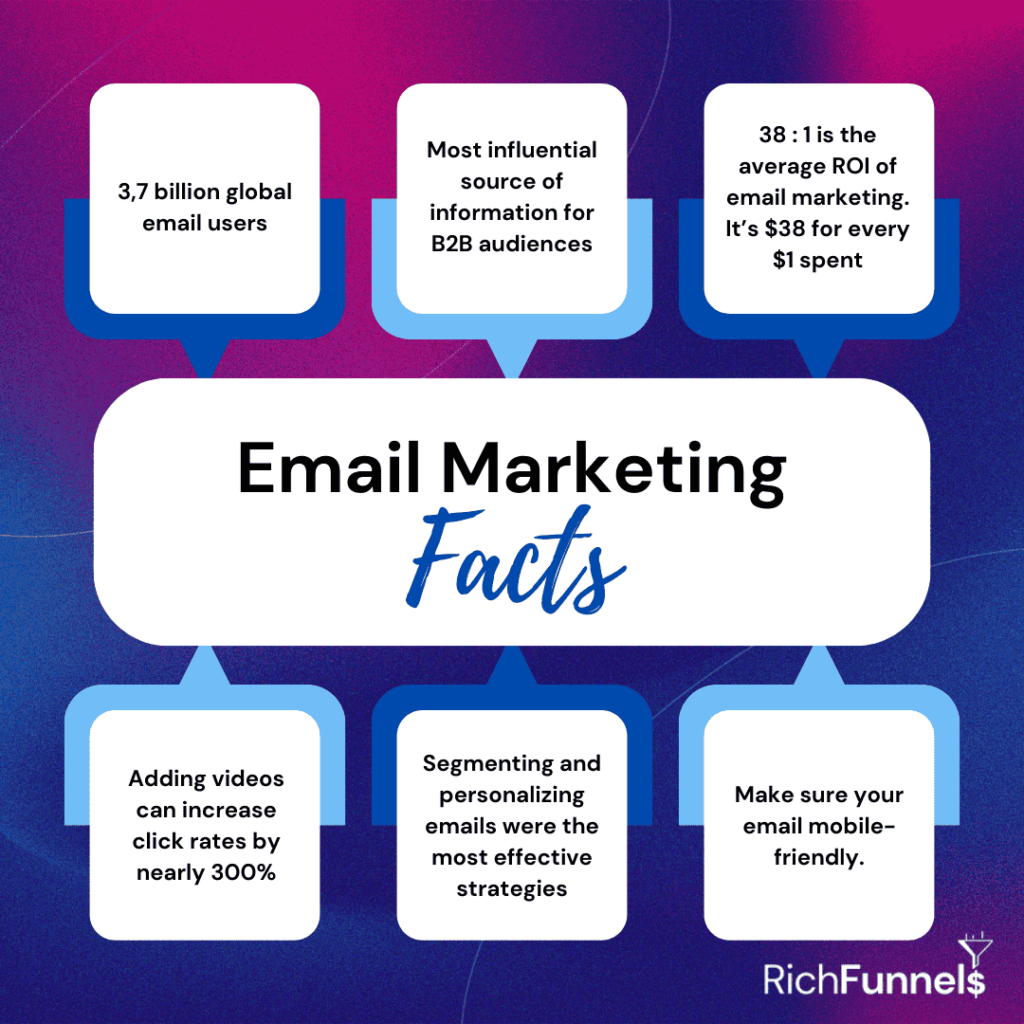
Bottom Funnel Conversion Optimization
Although the journey to conversion varies by industry, certain strategies consistently drive results. Particularly effective are personalized communications – when customer service agents have access to comprehensive profiles including loyalty status, preferences, and purchase history.
To optimize bottom-funnel conversion, businesses should focus on:
- Implementing robust analytics software for customer data collection
- Offering self-service options for basic tasks
- Conducting customer satisfaction (CSAT) surveys
- Creating personalized promotional offers
Undoubtedly, the key to success lies in continuous evaluation and optimization. Thus, businesses should regularly collect feedback through follow-up interviews and focus groups to identify areas for improvement [2].
Leveraging Marketing Technology in Your Funnel
In today’s digital landscape, marketing technology (MarTech) serves as the backbone of successful funnel optimization. Initially, businesses relied on basic tools, however, the MarTech landscape has expanded to include over 500 marketing, sales, and analytics platform.
Essential MarTech Stack Components
A well-structured MarTech stack enables businesses to streamline operations and enhance data-driven decision-making. Here are the fundamental components:
| Component | Primary Function |
|---|---|
| CRM Systems | Customer data management and relationship tracking |
| Marketing Automation | Campaign execution and personalization |
| Content Management | Digital asset organization and distribution |
| Analytics Tools | Performance tracking and measurement |
Automation and Personalization Tools
Equally important, automation maximizes agility in adapting to evolving customer demands. Studies show that personalized marketing campaigns generate higher engagement rates. Key automation capabilities include:
- AI-powered predictive analytics for lead scoring
- Dynamic content personalization across channels
- Real-time customer support through chatbots
- Automated workflow management
Data Analytics and Tracking Solutions
Overall, successful funnel optimization requires robust analytics tools. Marketing funnel analysis helps identify who prospects are, their origins, and potential exit triggers. Modern analytics platforms offer:
- Cross-channel performance tracking
- Customer journey mapping
- Attribution modeling
- Real-time reporting dashboards
Soon, artificial intelligence will play an even more crucial role in marketing automation. Research indicates that AI-powered algorithms can identify patterns that manual analysis might overlook. Likewise, customer data platforms (CDPs) have emerged as essential tools, offering the ability to integrate disparate data sources and create comprehensive customer profiles.
For optimal results, businesses should ensure their MarTech tools offer API connections, enabling real-time data synchronization between systems. This integration is vital as US martech spending is projected to increase by 12.7% year-over-year in 2024, reaching $27.06 billion.
Optimizing Each Stage for Maximum Impact
Optimizing your marketing funnel requires a strategic approach that aligns content, channels, and conversion techniques. Research shows that 45% of consumers are more likely to consider a product when it’s relatable, making personalization essential for success.
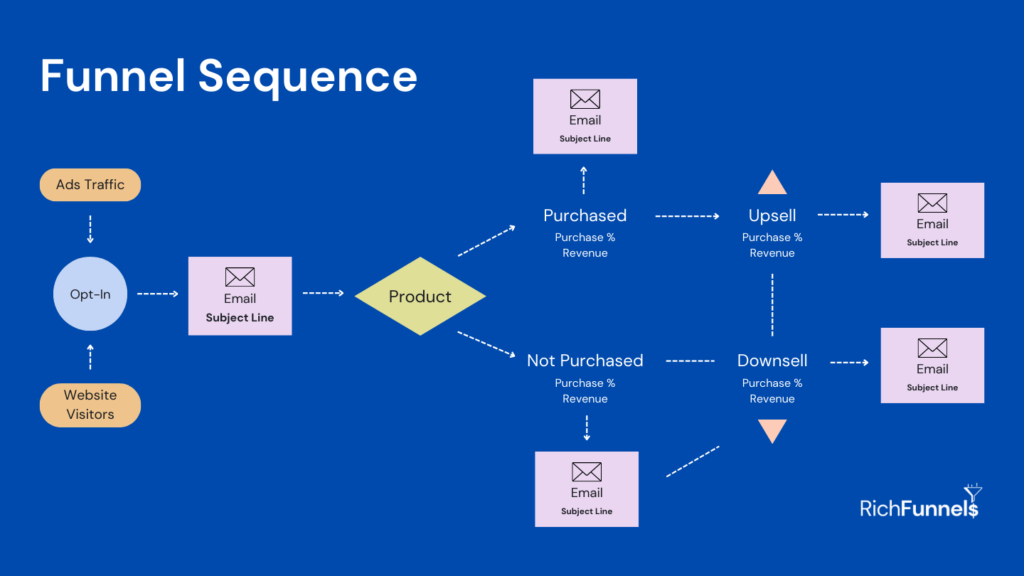
Content Strategy Alignment
Creating effective content starts with understanding your audience’s journey. Essentially, each stage requires different types of content to address specific user needs. Studies indicate that businesses focusing on brand value and loyalty see higher marketing funnel conversion rates.
To maximize impact, align your content strategy with these key elements:
- Educational content for awareness stage
- Comparative materials for consideration phase
- Trust-building elements for conversion stage
- Post-purchase support for retention
Channel Performance Analysis
Primarily, successful channel optimization relies on comprehensive tracking and analysis. Data shows that combining quantitative and qualitative data provides the most accurate picture of funnel performance.
| Metric Type | Key Indicators |
|---|---|
| Quantitative | Conversion rates, Goal completions |
| Qualitative | User feedback, Behavior patterns |
| Combined | Customer journey insights |
Conversion Rate Optimization Techniques
Subsequently, implementing proven optimization techniques can significantly improve funnel performance. Notable strategies include:
- Trust Building: Implement social proof elements, as 45% of consumers rely on relatable testimonials
- Landing Page Enhancement: Focus on strategic visual elements and compelling copy
- Form Optimization: Reduce friction by minimizing form fields and streamlining the process
- A/B Testing: Systematically test variations to determine optimal performance
Ultimately, the key to successful optimization lies in continuous monitoring and refinement. Research indicates that regular evaluation of important metrics, combined with strategic adjustments to targeting and messaging, leads to better alignment with customer needs.
For optimal results, focus on analyzing both internal and external factors affecting your funnel performance. This comprehensive approach helps identify correlations between different marketing efforts and their impact on marketing funnel conversion rates.
Measuring Success and ROI
Measuring the success of your marketing funnel requires a data-driven approach combined with strategic analysis. Studies show that only 23% of marketers are confident they track the right KPIs, highlighting the need for a more structured measurement framework.
Key Performance Indicators (KPIs)
Primarily, successful funnel analysis depends on tracking metrics at each stage. A comprehensive approach includes:
| Funnel Stage | Essential KPIs |
|---|---|
| Top | Impressions, Click-through rates |
| Middle | MQL to PQL conversion, Demo bookings |
| Bottom | Free trial conversion, Customer lifetime value |
Notably, research indicates that tracking meaningful actions boosts sales team morale and productivity. Essential metrics to monitor include:
- Customer Lifetime Value (CLV)
- Customer Satisfaction Score (CSAT)
- Net Promoter Score (NPS)
- Retention Rate
Attribution Modeling
Generally, attribution modeling helps identify which marketing channels contribute most effectively to conversions. Data shows that only 22% of marketers feel confident about their attribution model selection.
Different attribution models serve various purposes:
- First-click attribution: Credits the initial touchpoint
- Last-click attribution: Values the final interaction
- Multi-touch attribution: Distributes credit across multiple touchpoints
Essentially, full-funnel attribution unifies sales and marketing teams, breaking down data silos and providing a single source of truth for campaign performance.
Reporting and Dashboard Creation
Creating effective dashboards requires focusing on key components that drive decision-making. Research indicates that visual representation of funnel data is crucial because it makes complex data easily understandable and highlights trends more effectively.
Markedly, successful dashboard creation involves:
- Data Integration: Combine multiple data sources for comprehensive insights
- Visual Elements: Create clear, actionable visualizations
- Regular Updates: Maintain real-time or near-real-time data refresh
- Customization: Tailor dashboards to specific stakeholder needs
The rule of thumb for marketing ROI is typically a 5:1 ratio, with exceptional ROI being considered at around a 10:1 ratio. Presently, businesses should consider:
- Setting up alerts for significant changes in conversion rates
- Using cohort analysis to understand customer movement
- Combining funnel data with other metrics
- Sharing insights across teams
To maximize value from funnel reports, organizations should regularly review and update funnel stages, ensuring they reflect current sales processes. Studies show that funnel analysis isn’t a quarterly task but rather an ongoing process that should be engaged in weekly or at least a few times monthly.
Conclusion
Marketing funnels have transformed significantly since their inception, becoming sophisticated tools that demand strategic planning and continuous optimization. Data clearly shows that successful funnel management requires a balanced approach across awareness, consideration, and conversion stages.
Businesses achieving the best results combine robust MarTech solutions with personalized customer experiences. Through careful analysis of customer touchpoints and strategic implementation of automation tools, companies can build stronger relationships with their audience while maintaining efficiency.
Success metrics tell an important story – organizations tracking the right KPIs and implementing comprehensive attribution models see better outcomes. Rather than viewing the funnel as a rigid structure, successful businesses treat it as a dynamic framework that adapts to changing customer needs and market conditions.
Marketing funnels work best when teams regularly evaluate performance, adjust strategies based on data insights, and maintain focus on delivering value at every stage. Though the journey from awareness to conversion might seem complex, breaking it down into manageable components makes implementation straightforward and effective.


